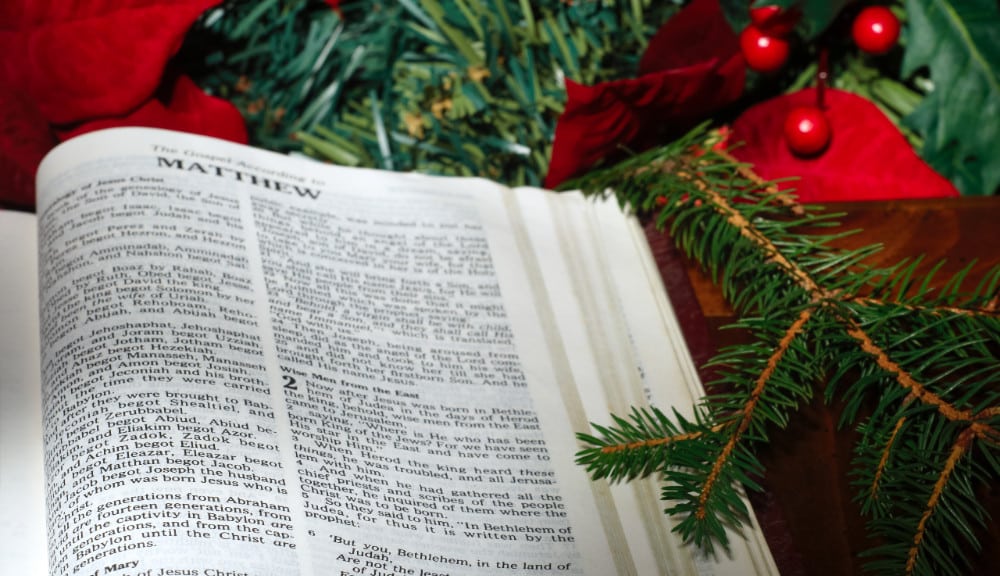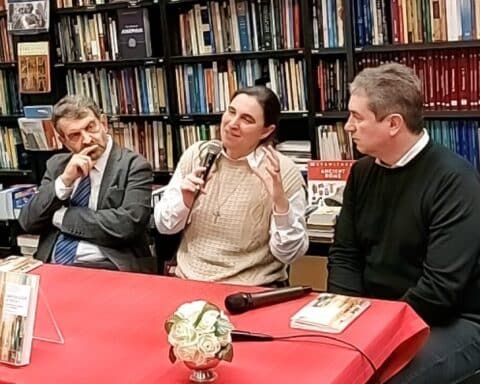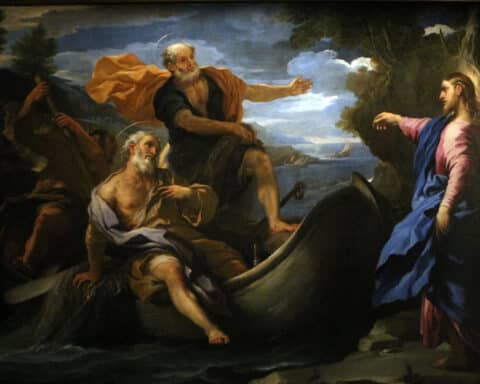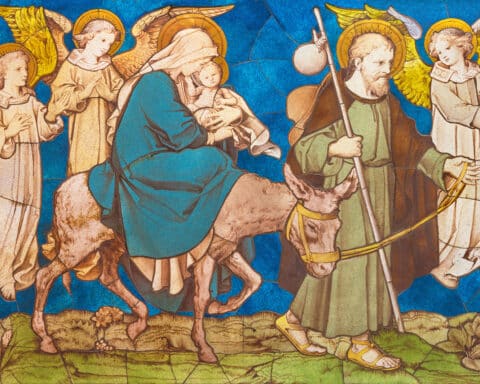
A few reflections about Matthew’s Gospel are in order. Several important lessons may be learned.
The first lesson comes from the composition of Matthew’s Gospel — and, for that matter, of Mark, Luke and John. They were not someone’s diary of traveling with Jesus. The Gospels appeared generations after Jesus.
Memories of Jesus, kept by those who saw or heard the Lord, first circulated verbally. Then witnesses began to die. People did not want the memories of Jesus to die with them. So, these memories were recorded in writing. They are the Gospels. God impelled these witnesses to write. God wants us to know Jesus, for our own sake.
Gospels other than Matthew, Mark, Luke and John exist, such as the Gospels of James, Barnabas and Peter. No Bible, of any translation — today and for many centuries past — contains anything but Matthew, Mark, Luke and John, because in each case a Catholic pope, or popes, or ecumenical councils decided only the four traditional Gospels are truly inspired by the Holy Spirit, guaranteeing their veracity and reliability.
As for St. Matthew’s Gospel, the author of this Gospel long has been assumed to be Matthew, the tax collector, whom Jesus called to be an apostle, but the Evangelist gives no autobiographical details. The purpose was for us to know Jesus, not the author of the Gospel.
It seems evident that the Evangelist was a Jew, writing for an audience in which Jewish converts to Christianity were many. This Gospel shows a deep knowledge of Jewish history, religion and customs.
The Gospel begins with a painstaking list of the ancestors of Jesus, not to provide trivia, but to show that salvation, hope and life, for humans, was God’s plan all along. God so loved humanity.
Unique to Matthew is its account of the visit of the Magi to the newborn Savior in Bethlehem, an event now observed when the Church celebrates the feast of the Epiphany in early January. The Magi were not Jews. They lived in some distant place, but they yearned to know who, what and where the true God was. God led them to the answer, to Jesus, in the manger, by giving them a bright and guiding star.
Ancient Jews put great stress upon Moses, who led the Hebrews from slavery in Egypt, where they languished in misery, to security in the land “flowing with milk and honey.” To enable them in their flight, and to lead them to the Promised Land, God sent Moses to them. Moses left writings to point the Jews not only to a secure home but to God. These writings are the first five books of the Old Testament, the Pentateuch, or the Torah, as Jews call them.
Matthew’s Gospel divides its accounts of the Lord’s ministry into five sections. Jesus is the new Moses, the Gospel is the Christian Torah, so to speak. It leads to peace and hope in this life and to everlasting joy in heaven, the land flowing with truly nourishing milk and honey.
As the new year progresses, and as the Church presents Matthew’s Gospel again and again, we shall learn the miracle and the mystery of God’s love. Each reading will mention a specific moment in the life of Jesus, but overall, all will reassure us of God’s love, brought to us by the Lord, in the Gospels, through the Church, that we might live in hope and peace.
Msgr. Owen F. Campion is OSV’s chaplain.





